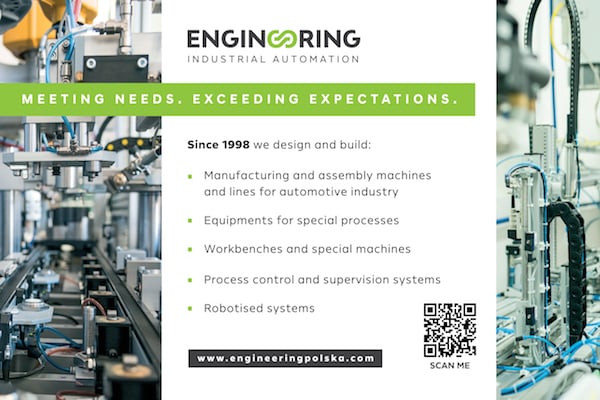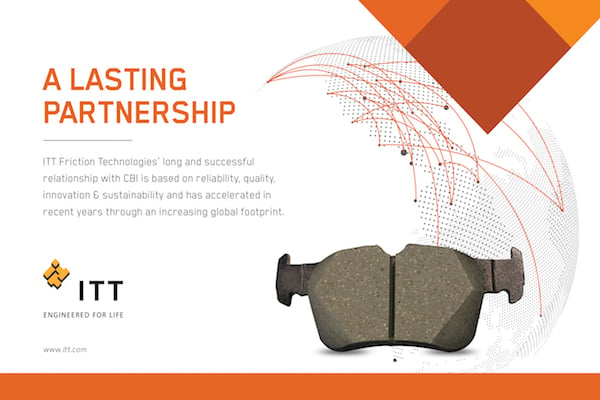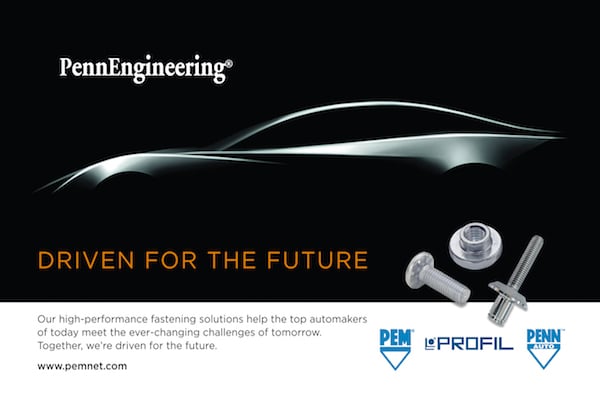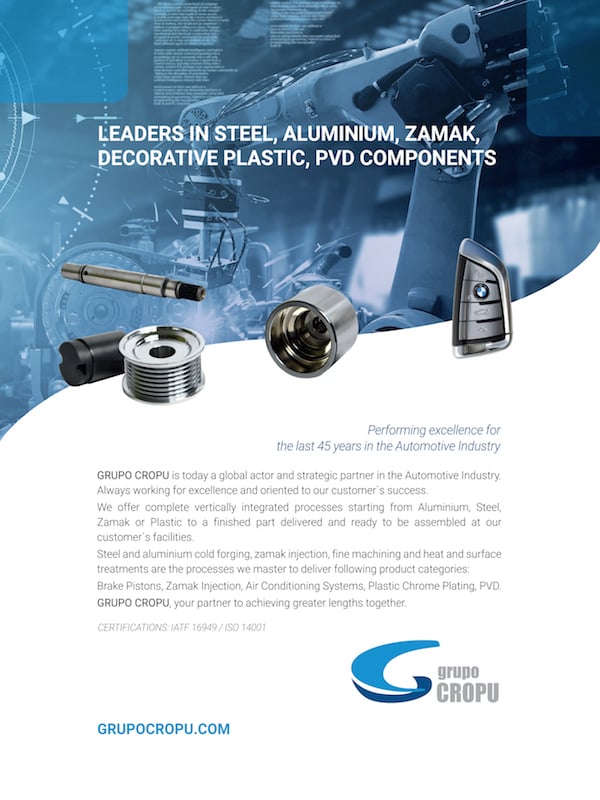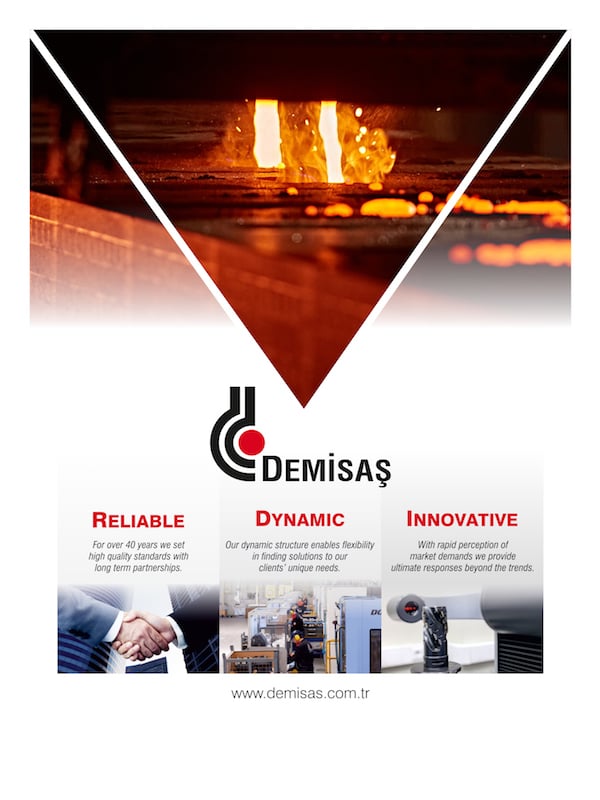When The CEO Magazine spoke to CEO of Chassis Brakes International Dr Thomas Wünsche in 2016, he was “thrilled” by the success of the Rise 2020 program: a series of small, ambitious goals that targeted €1.5 billion in sales by 2020.

Thomas said that the company had “regained customer confidence” and was “operating competitively”. Since that interview, Chassis Brakes International has exceeded its goals, with Thomas heralding a new program: SmartUP 2025, a more impressive agenda concerned with tackling industrywide issues such as the emergence of electric vehicles, improving safety standards and preparing autonomous driving.
“We started Rise 2020 to turn the wheel and get back on the road to growth” says Thomas. “Four years later, we have seen sustainable strategies have grown the company. Now, it’s time for us to ‘SmartUP’ and move ahead.”
May the road rise up to meet you
In its current incarnation since 2012, Chassis Brakes International has existed in some capacity since the 1930s. Its origins go back to 1924, when Vincent Bendix of the Bendix Corporation, an inventor and industrialist from the US state of Illinois, first met French engineer Henri Perrot.
Vincent had become obsessed with car brakes after his father was struck and killed by a car with defective brakes. Intrigued by Henri’s inventions after meeting him at an auto show in Europe, Vincent purchased the patent rights for his drum braking technology, known as the Perrot system, believing it to be superior to anything available in the US.
That same year, he founded the Bendix Corporation in South Bend, Indiana, going public with the business and acquiring several other firms throughout the 1930s.
As Bendix grew, it introduced several innovative additions to the Perrot system, including the Electrojector in 1956 and the Duo-Servo system in the 1960s. In 1983, it was acquired by the Allied Corporation and renamed Allied Signal.
Robert Bosch GmbH acquired that company in 1996, transforming it into “a systems supplier of complete braking and brake control systems for vehicles”.
In 2012, Bosch Group’s Foundation Brakes was sold to KPS Capital Partners, and was subsequently named Chassis Brakes International. Today, the company is “one of the world’s largest manufacturers of automotive foundation brakes and foundation brake components,” says Thomas adding that the plan is now to expand sales of innovative braking solutions to automakers worldwide.
“As a global system solutions provider, we are developing breakthrough technologies to address the market and its emerging players,” he says. “It is a priority because the business is facing more upheaval than ever before.”
Chassis Brakes International has recognised five trends that will drive change in the automotive industry: electrification, autonomous driving, connectivity, new mobility and light weighting.
An automotive industry veteran of more than two-and-a-half decades, Thomas first began working with industrial manufacturer Mannesmann as a researcher completing his PhD.
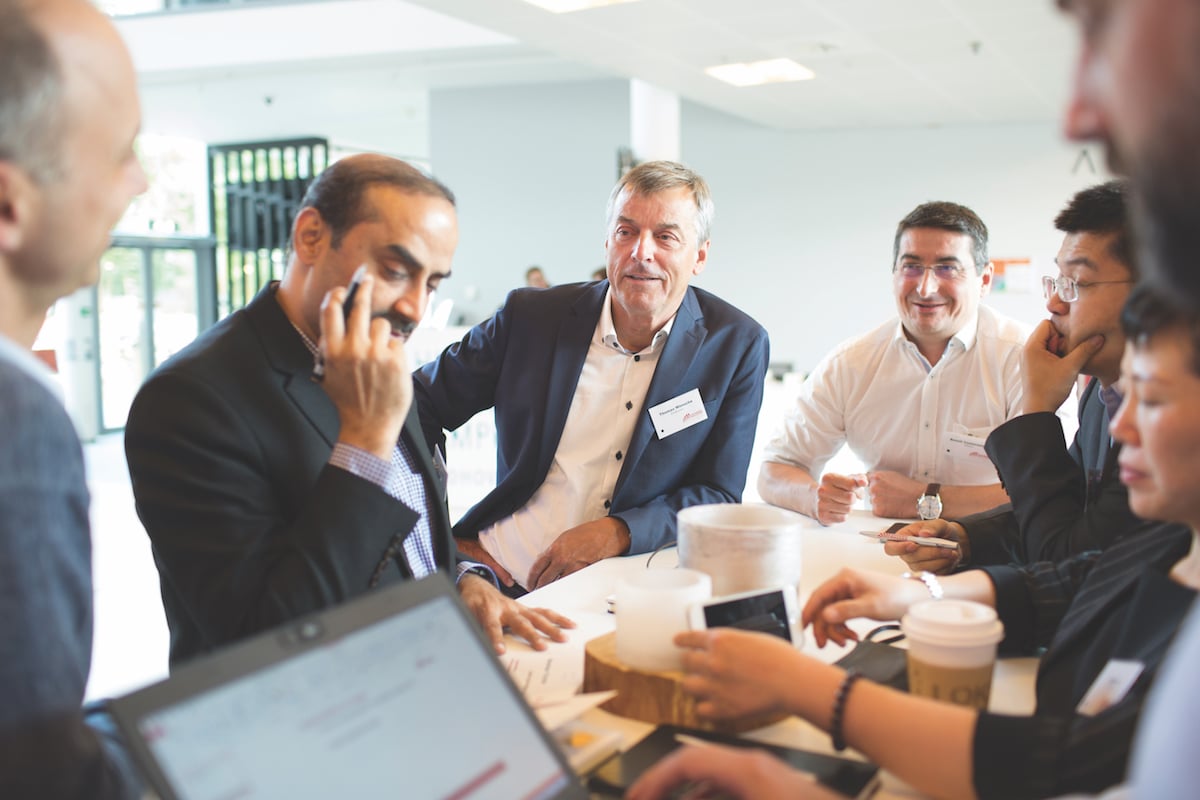
Joining Mubea in 1992, his decision to join Edscha five years later would lead to his eventual appointment as CEO for North America, a role in which he would serve until 2005. From there, he would hold CEO positions with Eberspächer and Benteler Automotive, before being appointed CEO of Chassis Brakes International in 2015.
When asked about working with Chassis Brakes International, Thomas says, “Everyone here is passionate, direct and engaged. I see a lot of innovation from people in what is a changing environment.”
His view that the automotive industry is changing was the impetus for the company’s Rise 2020 program. Thomas implemented the plan when he joined the company in order to grow the business and to make full use of the company’s potential through four pillars: Customers, Products, Business Operations and Operational Excellence.
Having now expanded the company’s global reach, Thomas is particularly proud of the company’s new research and development centre, founded in 2016 and based in Eindhoven in the Netherlands.
“The Brainport Eindhoven region is known for its start-up culture, software and electromechanical competences,” he says. “I like to think of it as Europe’s Silicon Valley. It’s the perfect place to build solid expertise in new braking solutions and strengthen our growth in combination with our research and development centre in Paris.”
“I like to think of the Brainport Eindhoven region as Europe’s Silicon Valley.”
In addition, the company has developed its manufacturing footprint more willingly with a newly established plant in the Mexican state of Querétaro. As North America is the second-largest car manufacturer in the world, the company has long coveted a foothold in the NAFTA region, where they can supply braking systems to millions of vehicles built annually across Mexico, the US and Canada.
“The production of brake calipers started last year for major automakers with assembly operations in Mexico and the US,” explains Thomas. “This 9,000-square-metre plant is expected to have more than 300 employees when production capacity reaches 8,500 units per day in 2020, which will mean a lot for growth and further innovation.”
What drives you personally?
“My passion is my family. My sons are now in their twenties, and we get together quite a bit. It makes me happy when I get to see them because they are located in different countries. Seeing them is all I need; family is the quickest recovery I can have.”
Another reason for Chassis Brakes International’s success is due to the improvement of its safety and quality. “We didn’t just improve our health and safety ratings, we also stabilised our quality performance to a state-of-the-art 1ppm (one part per million defective) and obtained IATF 16949:2016 certification as early as 2016 for all our plants,” Thomas continues.
Another great success was the establishment of global purchasing and supply chain processes and the development of new and needed HR processes. “The implementation of IT solutions for new projects and functions was also very important to us.
Thanks to these clear strategies, processes and tools, today we’re the number three supplier of foundation brakes globally. Now, we’re on track to double our 2015’s organic sales growth and market share before 2020.
Our revenue has increased, and we’re selling on average two product families per customer. With acquisitions ongoing, we’re always looking to work with the right partners to help us grow.”
Achieving the targets of Rise 2020 ahead of schedule has given the business confidence in the future, says Thomas. “We have grown with our customers and defended our position. If it weren’t for the relationships we built with international manufacturers, we wouldn’t have been able to do that.”
Going full throttle
Having exceeded initial targets, Thomas is now focused on implementing SmartUP 2025, a more daring roadmap that covers wider trends in the automotive industry, such as vehicle electrification, autonomous driving and other megatrends.
“We came to the conclusion in 2018 that we needed to update our strategy,” notes Thomas. “The automotive world is changing, and our strategy needed to be adjusted too. We are approaching the automotive trends with our innovative DNA, which is safer, cleaner and smarter. We want to be one step ahead, we want to be faster than others. That’s the thrust behind SmartUP 2025.”
As the automotive industry faces an unprecedented complex and demanding environment, car manufacturers are looking for comprehensive solutions that go beyond a simple product. “Today, we are selling products,” says Thomas.
“Tomorrow, braking solutions will integrate software and electronics, therefore transforming Chassis Brakes International into a system supplier.”
Whereas Rise 2020 emphasised meeting internal goals, SmartUP 2025 is purposely broader in its ambition and targets. It aims for an emphasis on producing “safer, cleaner and smarter brakes” which, though sounding simple, requires an incredibly complex attention to the technology that goes into braking systems.
For example, the solution to cars’ environmental impact is often reduced to transitioning from internal combustion engines to electric motors. Brakes, however, also contribute to particulate matter emissions.
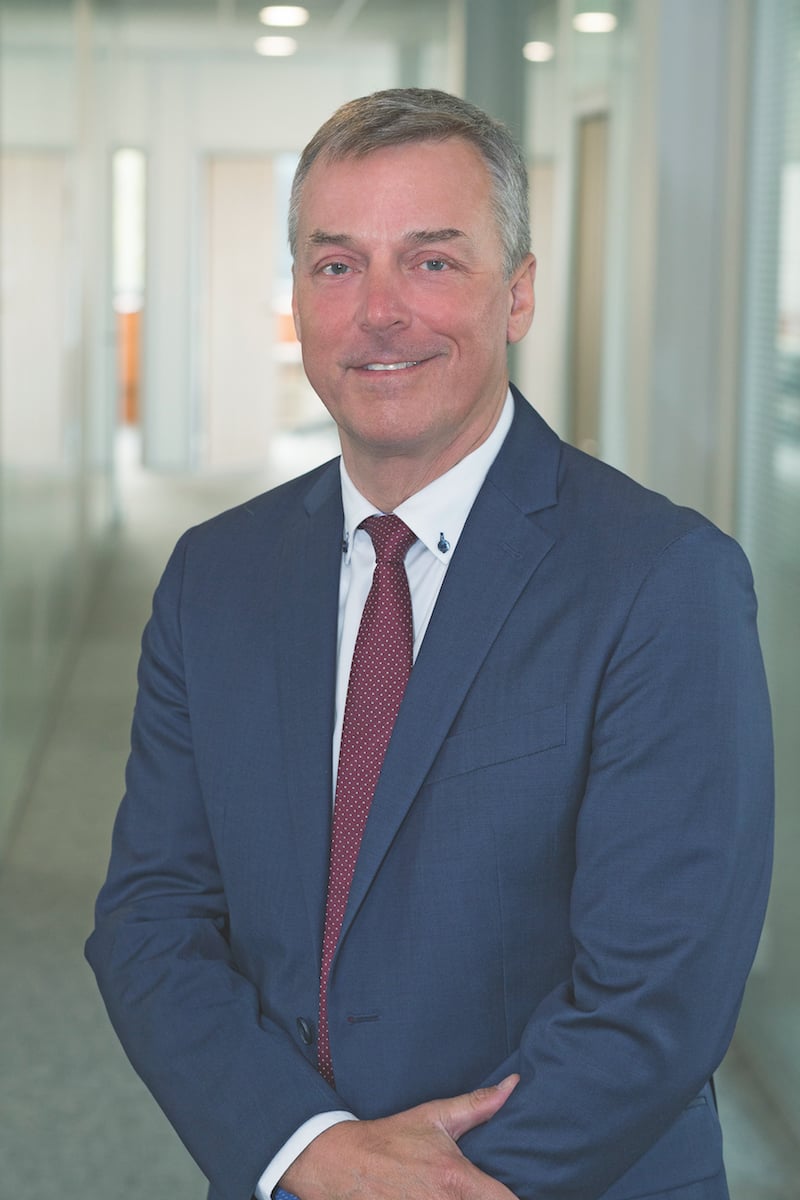
“We want to reduce the environmental impact of our products, including CO2 emissions and dust,” says Thomas. “To do that, we have launched into the market our disc brake ZOHe AST™ (Active Shape Technology), an innovation supporting the reduction of CO2 emissions.
We’ve also got to look at the basics, like the formulation of pads as well as the rotor coatings and materials used.”
Though it’s not where most vehicular emissions come from, braking can have an outsized impact on the environment, with fine dust emission similar to the sort created by tyres or that of the engine itself. Thomas explains that the company has signed a partnership agreement with MANN+HUMMEL regarding an “add-on particle filter to reduce particulate emissions from passenger-car brakes.
By bringing our brake expertise to this expert in filters, we will make headway reducing these emissions significantly.
“Building alliances is a dimension of our SmartUP 2025 strategy. We’re looking for the right partners. By combining our intellectual power with others, we will bring innovative braking solutions quicker to market.”
Partnerships like these are just one of the ways that Chassis Brakes International is rethinking how to best manufacture brakes. “We are evolving from a mechanics to a mechatronic systems supplier.
There are a lot of aspects that need to be addressed, like the need to start constructing electromechanical braking solutions that don’t need a hazardous fluid to operate through brake-by-wire technology.”
“This will be an ongoing journey as we have seen the introduction of steer-by-wire into the market. Future steering solutions are needed for autonomous driving.”
The company’s brand new brake-by-wire Smart Brake™ will serve as a foundation for future autonomous-vehicle brake systems. “We unveiled the first demo car equipped with a dry brake-by-wire system on four wheels in March. It acts as a platform for system and safety validation, including full-service brake performance and parking brake functionality on all wheels. The system also reduces residual drag, which can help improve fuel economy and reduce CO2 emissions as well as fine dust.”
Going more into software requires certification towards automotive SPICE and ISO 26262, which are standards for functional safety and embedded software. “We will approach new technical and systems solutions,” explains Thomas.
“As the industry moves towards electrification and autonomous driving, greater systems control is required than in the past. That shift from hydraulically controlled braking has the added advantage of eliminating hazardous fluid and building redundancy, which is crucial for safety in regards to autonomous driving.”
Although meeting the goals of SmartUP 2025 is not without its challenges, Thomas is insistent that adherence to its four dimensions – Customers, Systems and Products, Business Excellence and Alliances – will be the paramount to success.
“We just need to stay true to the requirements and methodology,” he says. “If we do that, we can focus our teams and be successful; if we deviate from it though, it won’t work.”
Thomas explains that growth, while desirable, must be steady. “I think that by having a culture of value, we can focus on collaborating and networking with one another.”
The road ahead
With a low attrition rate and opportunity to innovate, Thomas says that employees are excited to stay with Chassis Brakes International. “We’re focused on the megatrends in the industry. We’ve expanded our access to people and built up our software and mechatronics expertise.
“It’s important we remind ourselves that success is never guaranteed. We have to confront challenges when they appear at the earliest stages.”
“Today, I’m speaking from our Heilbronn technical centre, a state-of-the-art design and development centre for our German customers that has given us more visibility in the market. No matter what happens, it’s important we remind ourselves that success is never guaranteed. We have to confront challenges when they appear at the earliest stages.”

With the constantly changing automotive environment, Chassis Brakes International stands apart by being unafraid to innovate. “We create things. We don’t work for the sake of working.
We want to be different and entrepreneurial and engender the support of our shareholders.”
Excited to be working on pioneering solutions for electric and autonomous vehicles, Thomas says Chassis Brakes International is in an extremely enviable position.
And there is more to come since Hitachi Automotive Systems has signed a put-option agreement to acquire Chassis Brakes International.
As Thomas puts it, “Hitachi Automotive Systems’ ambition is to create an industry leader in automotive safety solutions by supporting further development and integration of electrification, AD/ADAS technologies (Advanced Driver-Assistance Systems) and software that contribute to a safer, more sustainable society. ”
Proudly supported by:
